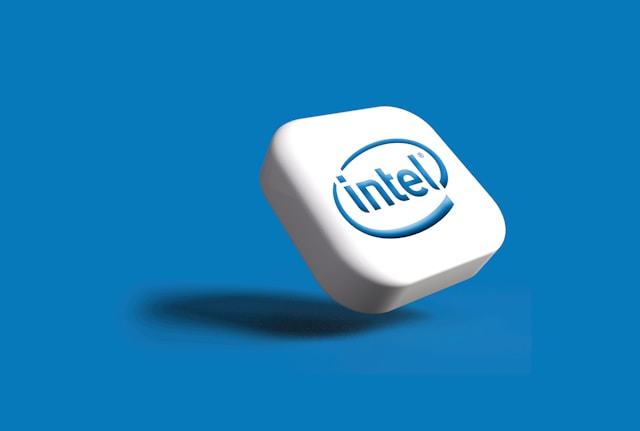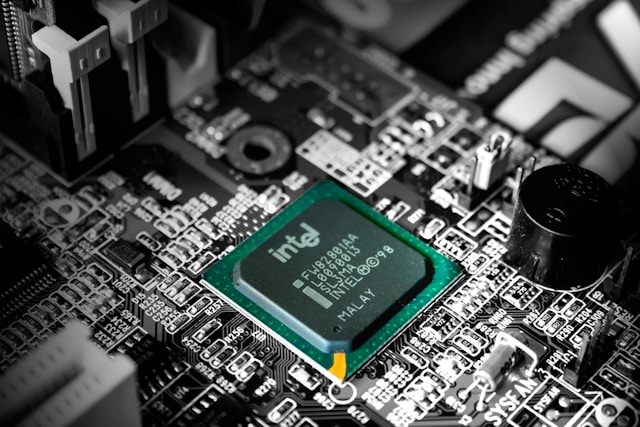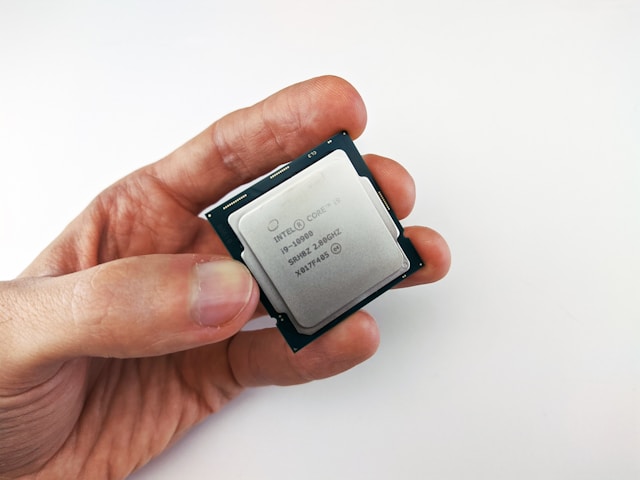Intel is renowned not only for its technological prowess but also for its innovative marketing strategies. Since its inception, Intel has skillfully navigated the fast changing tech landscape, consistently positioning itself as a market leader. For marketing professionals seeking inspiration from big brands, Intel’s journey offers a wealth of insights. Let’s look under the cover of Intel’s marketing strategy, examining key campaigns, branding initiatives, and the adaptive techniques that have cemented its place in the global market.
The Birth of a Brand: Intel Inside
Intel’s marketing journey is inextricably linked to its “Intel Inside” campaign, launched in 1991. This pioneering strategy was revolutionary, marking one of the first times a component manufacturer aimed to reach end consumers directly. Traditionally, semiconductor companies focused their marketing efforts on OEMs (Original Equipment Manufacturers). Intel, however, recognized an opportunity to create brand awareness and loyalty among consumers themselves.

The “Intel Inside” campaign involved a co-op marketing program where Intel subsidized a portion of the advertising costs for computer manufacturers who included the “Intel Inside” logo in their ads. This approach was a win-win. Manufacturers benefited from reduced advertising costs, while Intel enjoyed heightened brand visibility and consumer preference for Intel-powered computers.
This strategy also involved direct-to-consumer advertising, emphasizing the performance and reliability of Intel processors. By doing so, Intel shifted the focus from the price of a computer to its performance, effectively differentiating itself from competitors. The “Intel Inside” campaign not only elevated Intel’s brand recognition but also increased the perceived value of computers featuring its processors, thus driving demand.
Creating a Brand Identity
Building on the success of the “Intel Inside” campaign, Intel focused on creating a strong brand identity. A critical component of this effort was the development of the Intel jingle, a five-note audio logo that became synonymous with the brand. The jingle was introduced in 1994 and quickly became one of the most recognized audio signatures in the world. This audio branding effort reinforced the visual “Intel Inside” logo, creating a multi-sensory brand experience that enhanced recall and recognition.
Another key aspect of Intel’s brand identity was its commitment to innovation. Intel’s marketing consistently emphasized its cutting-edge technology and leadership in the industry. Campaigns highlighted technological advancements and their impact on consumer experiences, from enhanced graphics to improved processing speeds. By positioning itself as a leader in innovation, Intel built a brand image that resonated with both consumers and businesses looking for the best technology solutions.
Embracing Digital Transformation
As the digital age dawned, Intel recognized the need to adapt its marketing strategies to the changing landscape. The rise of the internet and social media presented new opportunities for engagement and brand building. Intel embraced these changes, leveraging digital platforms to reach broader audiences and create more personalized marketing experiences.

One notable initiative was Intel’s “Sponsors of Tomorrow” campaign, launched in 2009. This campaign aimed to reframe Intel as a forward-thinking company shaping the future of technology. The campaign utilized a mix of traditional and digital media, including television, online videos, and social media. By focusing on the future and Intel’s role in it, the campaign successfully resonated with a tech-savvy audience and reinforced Intel’s image as an innovator.
Intel also leveraged content marketing to engage its audience. The Intel Newsroom and Intel IQ platforms provided a steady stream of content ranging from product announcements to thought leadership pieces. This content not only informed and engaged the audience but also positioned Intel as a trusted source of information in the tech industry.
Partnering for Success
Partnerships have played a crucial role in Intel’s marketing strategy. Collaborations with other tech giants, such as Microsoft and Apple, have allowed Intel to expand its reach and influence. These partnerships often involved joint marketing efforts that highlighted the synergy between Intel processors and other leading technologies.
For example, Intel’s partnership with Microsoft in promoting Windows-based PCs showcased the compatibility and enhanced performance offered by Intel processors. Similarly, collaborations with Apple for Mac computers highlighted Intel’s role in delivering high-performance computing experiences. These partnerships not only boosted Intel’s visibility but also reinforced its position as a key player in the tech ecosystem.
Intel has also ventured into non-traditional partnerships to reach new audiences. Collaborations with fashion brands, such as its partnership with Opening Ceremony for the smart bracelet MICA, showcased Intel’s commitment to integrating technology with everyday life. These partnerships helped Intel reach lifestyle-oriented consumers and expanded its brand appeal beyond traditional tech enthusiasts.
Engaging Through Storytelling
Storytelling has been a powerful tool in Intel’s marketing arsenal. By telling compelling stories about how its technology impacts people’s lives, Intel has created emotional connections with its audience. One notable example is the “Look Inside” campaign, which featured real-life stories of individuals who used Intel technology to achieve remarkable feats.
The “Look Inside” campaign included stories such as that of Jack Andraka, a teenager who developed an early detection test for pancreatic cancer using Intel technology. By focusing on the human aspect of technology, Intel showcased the transformative power of its products and inspired audiences with stories of innovation and achievement.
Leveraging Influencer Marketing
In the age of social media, influencer marketing has become an essential component of Intel’s strategy. By partnering with influencers and tech enthusiasts, Intel has been able to reach niche audiences and create authentic connections. Influencers help humanize the brand and provide third-party validation, which can be particularly effective in the tech industry.

One example of this approach is Intel’s collaboration with prominent YouTubers and tech bloggers for product launches and reviews. These influencers provide in-depth analyses and personal experiences with Intel products, offering valuable insights to their followers. This strategy not only boosts product awareness but also builds trust and credibility among potential customers.
Adapting to Market Changes
Intel’s ability to adapt to market changes has been a key factor in its sustained success. The company has continuously evolved its marketing strategies to stay relevant in a dynamic industry. For instance, the shift towards mobile computing and the rise of smartphones and tablets posed a challenge to Intel, traditionally known for its dominance in the PC market.
In response, Intel launched campaigns that highlighted its advancements in mobile technology, such as the Atom processor. These efforts aimed to reposition Intel as a leader in the mobile space and capture a share of the growing market. The company’s marketing efforts emphasized the performance and efficiency of Intel-powered mobile devices, appealing to consumers looking for high-quality mobile experiences.
Commitment to Corporate Social Responsibility
Corporate social responsibility (CSR) has become increasingly important in modern marketing, and Intel has embraced this trend. The company’s CSR initiatives have been integrated into its marketing strategy, showcasing its commitment to sustainability, diversity, and community engagement.
Intel’s marketing campaigns often highlight its efforts in environmental sustainability, such as reducing carbon emissions and promoting energy-efficient products. Additionally, the company’s initiatives to promote diversity and inclusion within its workforce have been prominently featured in its marketing materials. By aligning its brand with positive social values, Intel has strengthened its reputation and connected with socially conscious consumers.
The Role of Data-Driven Marketing
In today’s data-driven world, Intel has leveraged analytics and insights to refine its marketing strategies. The company uses data to understand customer preferences, measure campaign effectiveness, and optimize its marketing efforts. This data-driven approach allows Intel to make informed decisions and allocate resources more effectively.
One example of this is Intel’s use of social listening tools to monitor online conversations and gather insights about consumer sentiment. By analyzing this data, Intel can identify trends, gauge the success of its campaigns, and make real-time adjustments to improve performance. This proactive approach to marketing ensures that Intel remains responsive to market changes and customer needs.
Lessons from Intel’s Strategy for Modern Marketers
Intel’s marketing strategy offers valuable lessons for modern marketers. The company’s success is rooted in its ability to innovate, adapt, and engage with its audience. From the groundbreaking “Intel Inside” campaign to its embrace of digital transformation and data-driven marketing, Intel has consistently demonstrated a forward-thinking approach.
For marketers looking to emulate Intel’s success, several key takeaways emerge. First, creating a strong brand identity through consistent messaging and sensory branding can significantly enhance brand recognition and loyalty. Second, leveraging partnerships and collaborations can expand reach and influence, while storytelling and influencer marketing can create emotional connections with the audience.
Additionally, adapting to market changes and embracing digital platforms are essential for staying relevant in a rapidly evolving landscape. Finally, integrating corporate social responsibility into marketing efforts can strengthen brand reputation and connect with socially conscious consumers.
By studying Intel’s marketing journey, modern marketers can gain insights into building resilient, innovative, and customer-centric strategies that drive long-term success. As the marketing landscape continues to evolve, Intel’s story serves as a powerful reminder of the importance of adaptability, creativity, and a deep understanding of consumer needs.
Intel’s marketing strategy offers a treasure trove of lessons for marketers across various industries. Here are some key takeaways that can inspire and guide modern marketing professionals:
1. Creating a Strong Brand Identity
One of Intel’s most notable achievements is the creation of a strong brand identity. The “Intel Inside” campaign, coupled with the memorable five-note audio logo, helped establish Intel as a household name. Marketers can learn the importance of developing a distinct and consistent brand identity that resonates across all touchpoints. This involves creating memorable visual and auditory elements that reinforce brand recognition.
2. Direct-to-Consumer Marketing
Intel’s decision to market directly to consumers, despite being a component manufacturer, was groundbreaking. This strategy highlighted the importance of performance over price, differentiating Intel from its competitors. Marketers can take a page from Intel’s book by recognizing the potential of direct-to-consumer (DTC) strategies, even in B2B industries, to build brand awareness and loyalty among end-users.
3. Leveraging Partnerships
Intel’s strategic partnerships with tech giants like Microsoft and Apple, as well as non-traditional collaborations with fashion brands, expanded its reach and influence. These partnerships showcased how synergies between brands can amplify marketing efforts and enhance product appeal. Marketers should seek out and cultivate partnerships that align with their brand values and objectives, enabling them to tap into new audiences and markets.
4. Innovative Campaigns and Storytelling
Intel’s campaigns, such as “Sponsors of Tomorrow” and “Look Inside,” effectively used storytelling to create emotional connections with their audience. Highlighting real-life stories of individuals using Intel technology for extraordinary achievements added a human element to the brand. Marketers should focus on storytelling that highlights the human impact of their products or services, fostering deeper connections with their audience.
5. Adapting to Digital Transformation
As the digital landscape evolved, Intel embraced new platforms and technologies to stay relevant. The company’s use of digital marketing, content marketing, and social media engagement provided broader and more personalized reach. Marketers need to stay agile, continually adopting new digital tools and platforms to meet their audience where they are.
6. Data-Driven Decision Making
Intel’s data-driven approach, from social listening to campaign analytics, underscored the importance of using data to inform marketing strategies. This ensures that marketing efforts are targeted, efficient, and effective. Marketers should invest in analytics tools to gather insights and continuously optimize their campaigns based on real-time data.
7. Corporate Social Responsibility (CSR)
Integrating CSR into marketing strategies has become increasingly vital, as demonstrated by Intel’s focus on sustainability and diversity. Highlighting CSR initiatives can strengthen a brand’s reputation and resonate with socially conscious consumers. Marketers should ensure that their CSR efforts are genuine and communicate them effectively to build trust and loyalty.
8. Building Multi-Sensory Brand Experiences
Intel’s use of a distinctive audio logo in addition to its visual branding created a multi-sensory brand experience. This approach can enhance brand recall and emotional connection. Marketers should explore multi-sensory branding opportunities, incorporating elements like sound, touch, and even scent to create a more immersive brand experience.
9. Flexibility and Adaptability
Intel’s ability to pivot its marketing strategies in response to market changes, such as the rise of mobile computing, highlights the importance of flexibility. Marketers must remain adaptable, ready to shift their strategies as industry dynamics evolve. This requires staying informed about market trends and being prepared to innovate.
10. Engaging with Influencers
Intel’s successful use of influencer marketing, particularly in the tech space, demonstrated how influencers can provide authentic endorsements and reach niche audiences. Marketers should identify influencers who align with their brand values and can authentically connect with their target audience, leveraging their influence to build credibility and reach.
11. Focusing on Innovation
Finally, Intel’s emphasis on innovation, both in its products and marketing efforts, positioned it as a leader in the tech industry. Marketers should foster a culture of innovation within their teams, encouraging creative thinking and the exploration of new ideas to stay ahead of the competition.
Intel’s marketing strategy, characterized by its innovative campaigns, strong brand identity, strategic partnerships, and adaptability, offers valuable lessons for marketers aiming to achieve long-term success. By focusing on creating meaningful connections, leveraging data, and embracing change, marketers can build resilient and impactful strategies that resonate with their audience and drive growth. As the marketing landscape continues to evolve, Intel’s story serves as a powerful example of the enduring power of innovation and strategic thinking.

